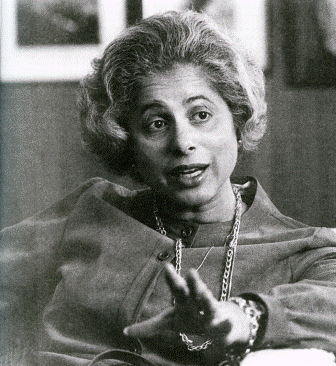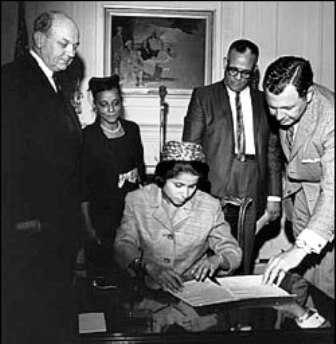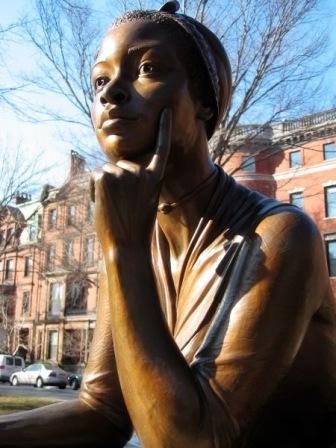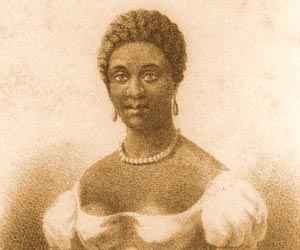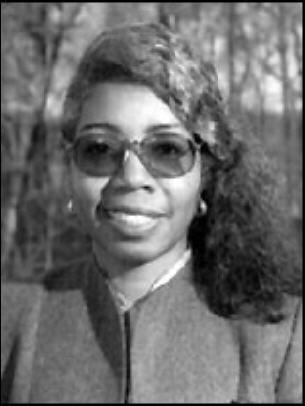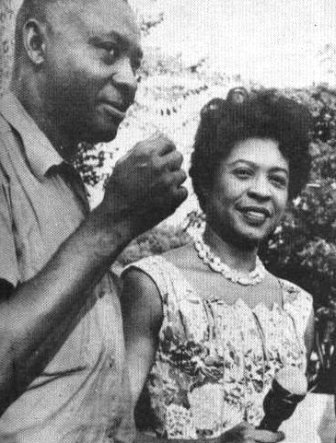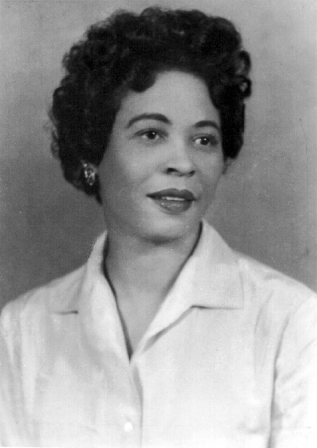Daisy Bates
Daisy Bates was a mentor to the Little Rock Nine, the African-American students who integrated Central High School in Little Rock in 1957. She and the Little Rock Nine gained national and international recognition for their courage and persistence during the desegregation of Central High when Governor Orval Faubus ordered members of the Arkansas National Guard to prevent the entry of black students. She and her husband, L. C. Bates, published the Arkansas State Press, a newspaper dealing primarily with civil rights and other issues in the black community.
Daisy Lee Gatson on November 11, 1914, in Huttig, Arkansas. Her childhood was marked by racial violence. Her mother was sexually assaulted and murdered by three white men and her father left shortly after that, forcing Daisy to be raised by friends of the family.
At the age of 15, Daisy became the object of an older man’s attention, Lucious Christopher “L. C.” Bates, an insurance salesman who had also worked on newspapers in the South and West. L.C. dated her for several years, and they married in 1942, living in Little Rock. The Bates decided to act on a dream of theirs, to run their own newspaper, leasing a printing plant that belonged to a church publication and inaugurating the Arkansas State Press. The first issue appeared on May 9, 1941. The paper became an avid voice for civil rights even before a nationally recognized movement had emerged.
In 1942, the paper reported on a local case where a black soldier, on leave from Camp Robinson, was shot by a local policeman. An advertising boycott nearly broke the paper, but a statewide circulation campaign increased the readership, and restored its financial viability. Continuing to write about civil liberties Daisy Bates was an active member of the NAACP and in 1952, she was elected president of the Arkansas State Conference of NAACP branches.
Daisy Bates became a key figure in the Little Rock Nine, one of the most important events in the African-American Civil Rights Movement. On May 17, 1954 the U.S. Supreme Court issued it's historic Brown v. Board of Education ruling. The decision declared all laws establishing segregated schools to be unconstitutional, and it called for the desegregation of all schools throughout the nation. Following this landmark decision the NAACP worked to register black students in previously all-white schools in cities throughout the South.
The Little Rock School Board agreed to follow the court's ruling and approved a plan of gradual integration that would begin in the fall of 1957 at the beginning of the following school year. The NAACP went on to register nine students to attend the previously all-white Little Rock Central High. The students, Ernest Green, Elizabeth Eckford, Jefferson Thomas, Terrence Roberts, Carlotta Walls LaNier, Minnijean Brown, Gloria Ray Karlmark, Thelma Mothershed, and Melba Beals, were chosen on the criteria of excellent grades and attendance.
Several segregationist councils threatened to hold protests at Central High and physically block the black students from entering the school. Governor Orval Faubus deployed the Arkansas National Guard to support the segregationists on September 4, 1957, vowing "blood will run in the streets" if black students tried to enter Central High. The sight of a line of soldiers blocking nine black students from attending high school made national headlines and polarized the city. Elizabeth Eckford, one of the Arkansas Nine, recalled "They moved closer and closer. Somebody started yelling, I tried to see a friendly face somewhere in the crowd, someone who maybe could help. I looked into the face of an old woman and it seemed a kind face, but when I looked at her again, she spat on me."
Although Wiley Branton of Jefferson County was the local attorney for the NAACP and handled much of the litigation, Dasisy Bates, in her capacity as president of the Arkansas Conference of Branches, was recognized as the principal spokesperson and leader for the forces behind the school desegregation. She had also been instrumental in selecting the nine students and had personally approached each of the families, asking them to step forward and participate. Daisy Bates was in constant contact with NAACP leaders and in constant conflict with segregationists using intimidation in Arkansas.
On September 9, "The Council of Church Women" issued a statement condemning the governor's deployment of soldiers to the high school and called for a citywide prayer service on September 12.
President Dwight Eisenhower attempted to de-escalate the situation and summoned Governor Faubus to meet him. The President warned the governor not to interfere with the Supreme Court's ruling. With all the threats of violence Woodrow Mann, the Mayor of Little Rock, asked
President Eisenhower to send federal troops to enforce integration and protect the nine students.
On September 24, the President ordered the 101st Airborne Division of the United States Army to Little Rock and federalized the entire 10,000 member Arkansas National Guard, taking it out of the hands of Governor Faubus. The 101st took positions immediately, and the nine students successfully entered the school on the next day, Wednesday, September 25, 1957.
Unhappy with the results, white racists saw to it that Daisy Bates and others were arrested the following month for not turning over NAACP records. Though Daisy Bates was no longer an officer of the NAACP, she was fined, though her conviction was eventually overturned by the U.S. Supreme Court.
For much of the school year, Daisy Bates was in daily contact with the national office of the NAACP in New York as segregationists battled to destroy the NAACP in Arkansas as well as to intimidate her, her husband, and the Little Rock Nine and their families into giving up the struggle. The families of the Arkansas were all the subject of racial acts. Many of them lost their jobs and lived under the constant threat of violence. Individuals also attacked the Bates' home in Little Rock, forcing them to stand guard nightly. Ernest Greene was the only senior of the Arkansas Nine and he graduated the following spring. Martin Luther King attended the graduation, but Daisy Bates thought it was better is she did not attend, wanting to avoid any reason for violence to erupt.
In recognition of her leadership, the national Associated Press chose her as the Woman of the Year in Education in 1957, along with being one of the top ten newsmakers in the world. Sadly, in 1959, as a result of intimidation by news distributors and a boycott by white business owners who withheld advertising, the Bates were forced to close the
Arkansas State Press.
Daisy Bates published her autobiography and account of the Little Rock Nine in 1962, and continued her struggle for Civil Rights, working for the Democratic National Committee until she was forced to stop when she suffered a stroke in 1965.
In 1984, the University of Arkansas at Fayetteville awarded Daisy Bates an honorary Doctor of Laws degree. Carrying the Olympic torch in the 1996 Atlanta Olympics was one of Daisy Bates last honors before she passed away in 1999.

